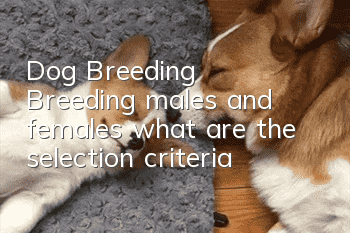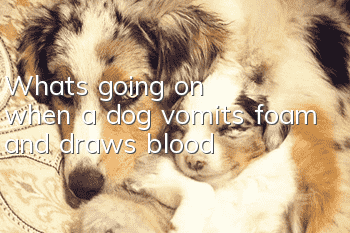Dog Breeding | Breeding males and females, what are the selection criteria?

When it comes to breeding, even professionals will inevitably lament that it is not easy to do this... Not to mention the additional skills of dog training, dog leading, and grooming, just breeding and selecting a breed is very taxing...
Editor of this article/Thunder
"Seed mothers with outstanding genetics are rare and precious"
The production function of a breeding male is unlimited. He can be matched with many female dogs to produce many, many puppies. However, the number of offspring a female dog can produce in her lifetime is limited. Because of this, breeding mothers with outstanding genetics are rare and valuable.
Although the qualities of a highly productive breeding mother may not be passed on to her offspring, her puppies will more or less have certain characteristics. Even if they are mated using the external mating method or the systematic mating method, Whether it is a well-known male dog or a less well-known male dog, you can observe that the puppies have some similarities from the mother.
But before the female dog has given birth, it is impossible to determine whether the female dog's productivity is strong or weak. The only basis is to trace its ancestors from its blood relatives to see if it is a dog with high productivity.
The genetic ability of some female dogs is extremely weak. When such female dogs are mated with high-quality and dominant male dogs, the puppies born will look like their father.
"The breeding male should be able to pass on excellent characteristics to the next generation"
The first condition for choosing a stud is that the stud must look strong and meet the breed standard.
A common mistake made by breeders is to choose a breeding male with an over-developed certain part to mate his female dog with a poor certain part, hoping to use the male dog's advantages to compensate or equalize. For example, if you mate an oversized male dog with a standard-sized female dog, you hope that the puppies born will be within the standard. Unfortunately, that's not how genetics works. Attempting to compensate for deficiencies with extreme excess will only further complicate and disrupt your breeding plans.
The breeding male should gather the excellent genetics of his father and mother, and be able to pass these excellent characteristics on to the next generation. This means that the sire’s father, grandfather, and great-grandfather have produced at least ten champions or more in each generation. If your current sire is still a young dog, he may not have produced ten champion registered dogs, but at least you should know from dog magazines or in the ring whether his puppies can become targets. This kind of sire with the ability to continue production should have decisive genetic advantages for its advantages. Make sure that the offspring of your sire and dam group will inherit the characteristics of the bloodline. If a champion dog does not have a strong background to back it up, it is just a lucky anomaly..
If you own a breeding male, you want to make sure that the qualities of this breeding male can be passed on to his next generation. If it has a beautiful head, and its father also has a beautiful head, but its mother does not, then you may be disappointed if you hope that its beautiful head will become an advantage. It may be genetically disadvantaged, and the same applies to other parts of its body such as hair volume, coat color, bones, etc.
It is best to trace the genetic characteristics of its parents. Unless your stud has very good genetics and can be called a leader in this breed, he is not qualified to be a stud.
Don’t think that a breeding male must be particularly large or small. If it is too big or too small, it will be considered a disqualification. Each dog breed has its own standards, and the breeding male must be within the standard. Smart breeders are unanimous in regarding dogs that are above or below the standard as scourges. If you have a male dog with breeding potential, it is recommended that you observe it carefully and train it.
Preparation before mating
Take your female dog to the veterinarian three months before she goes into heat. Items examined include: development, internal and external parasites, anemia, Brucellosis (a type of BRUCELLOSIS sexually transmitted disease); skin diseases, such as eczema, etc. Also make sure all vaccinations are within their validity period. If the disease is detected, you still have time to treat the female dog. Special attention should be paid to infectious diseases other than parasites and skin diseases, because these diseases can be transmitted to puppies after birth.
If your female dog is too fat, it will be difficult for her to conceive and give birth. However, if the female dog is too thin, she will not be able to supply enough milk, causing the puppies to be malnourished. The female dog must lose weight or increase nutrition according to the actual situation.
Making a breeding plan is only the first step. The next step is to face a series of problems. How to ensure the long-lasting quality of the male dog’s sperm? How to determine the ovulation time of the female dog? What should I do if the breeding fails? In short, breeding is a matter of fuss. Complete heart.
- How to cut your pet's nails
- What to do if your dog’s milk is engorged
- How to solve constipation in puppies
- What are the common methods for training dogs? Teach you how to communicate and train with your dog!
- How to Treat Ear Canal Infections in Silver Fox Dogs
- General treatments for dog poisoning
- What vaccines do dogs really need? What vaccines are necessary for your dog?
- What are the significant advantages of Corgis?
- Is your dog always sneezing? Sometimes it’s not as simple as catching a cold!
- Does cryptorchidism have a big impact on dogs?



